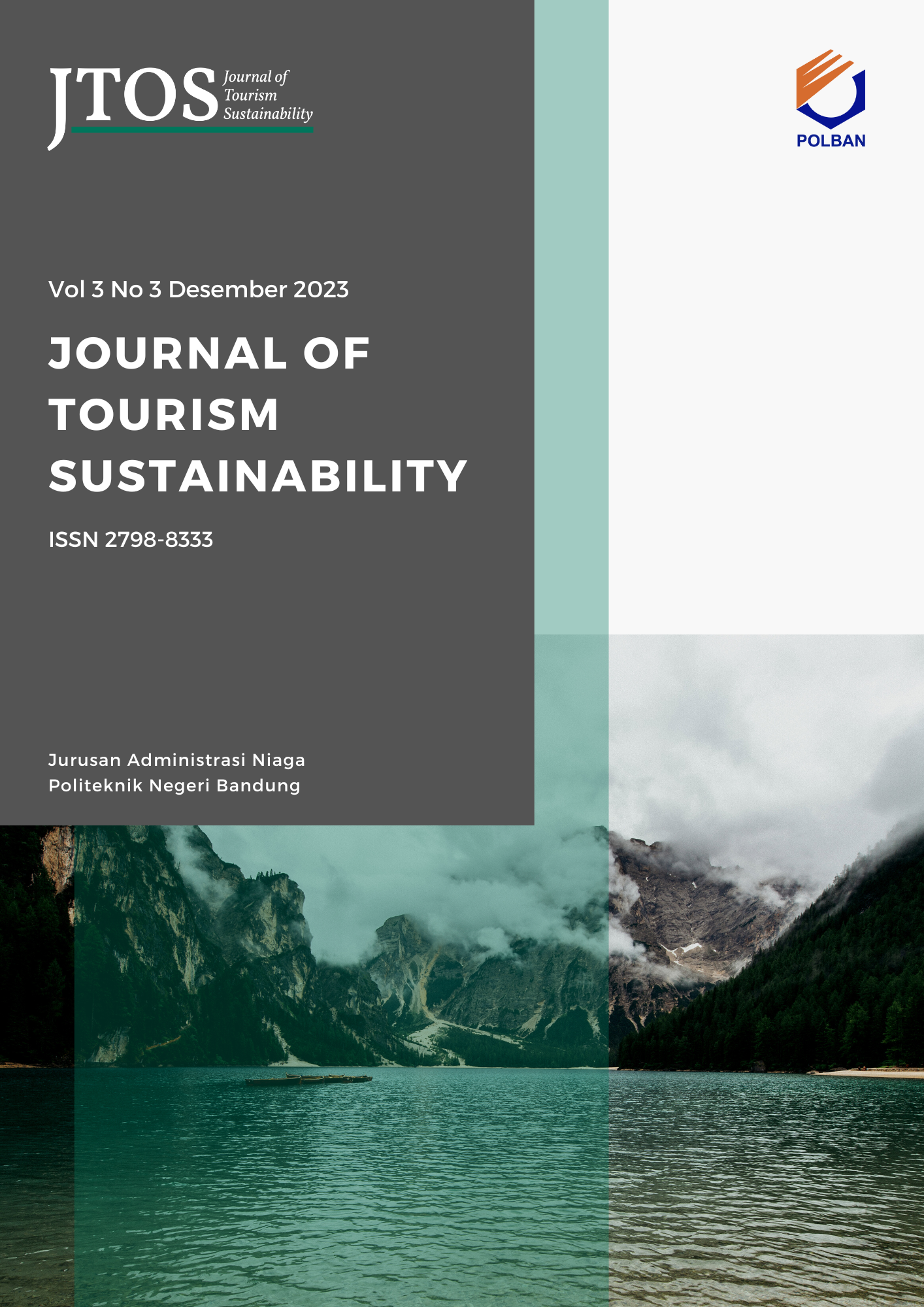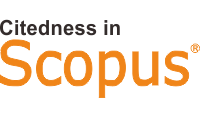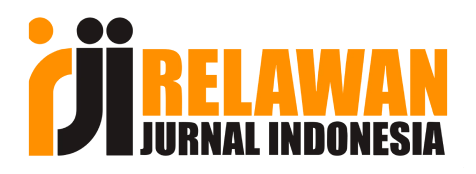Assessing the Ecotourism Potential of Birdwatching in Tebet Eco Park, an Urban Green Space in South Jakarta, Indonesia
DOI:
https://doi.org/10.35313/jtospolban.v5i3.170Keywords:
Birdwatching, Urban Green Space, Avitourism, Species Diversity, Tebet Eco Park, EcotourismAbstract
As one of the world's megadiverse countries, Indonesia holds vast potential for developing nature-based tourism, particularly avitourism. This study examines the birdwatching ecotourism potential of Tebet Eco Park, an urban green space in South Jakarta, by analyzing bird species' diversity, richness, dominance, and evenness within the park. Bird surveys were conducted from October to December 2024 using standardized observation methods along designated transects. A total of 24 bird species from 21 families were recorded. The Shannon-Wiener diversity index (H' = 2.46) and the Margalef richness index (R = 3.44) indicate moderate species diversity and community stability. Streptopelia chinensis and Pycnonotus aurigaster were the most dominant species, while Zosterops melanurus and Psittacula alexandri were identified as species of conservation concern. Several birds, such as Nectarinia jugularis, were noted for their colorful plumage or distinctive vocalizations, making them attractive for recreational birdwatching. The findings demonstrate that Tebet Eco Park has strong potential to be developed as a sustainable, accessible, and educational birdwatching ecotourism destination within an urban setting.
References
Afanasiev, O. (2022). Birdwatching, ornithological tourism, and avitourism: Terminological dispute and review of world and Russian practices. Revista Anais Brasileiros de Estudos Turísticos (ABET), 1–12.
Avenzora, R. (2008). Ekoturisme: Teori dan praktik. Penerbit BRR NAD NIAS, CV Tamita Persada.
Belaire, J. A., Westphal, L. M., Whelan, C. J., & Minor, E. S. (2015). Urban residents' perceptions of birds in the neighborhood: Biodiversity, cultural ecosystem services, and disservices. Condor, 117(2), 192–202. https://doi.org/10.1650/CONDOR-14-128.1
Bibby, C., Jones, M., & Marsden, S. (1998). Expedition field techniques: Bird surveys. BirdLife International.
Biggs, H. R., Bardzell, J., & Bardzell, S. (2021). Watching myself watching birds: Abjection, ecological thinking, and posthuman design. Proceedings of the 2021 CHI Conference on Human Factors in Computing Systems, 1–13. https://doi.org/10.1145/3411764.3445329
Bonier, F., Martin, P. R., & Wingfield, J. C. (2007). Urban birds have broader environmental tolerance. Biology Letters, 3(6), 670–673. https://doi.org/10.1098/rsbl.2007.0349
Callaghan, C. T., Slater, M., Major, R. E., Morrison, M., Martin, J. M., & Kingsford, R. T. (2018). Travelling birds generate eco-travellers: The economic potential of vagrant birdwatching. Human Dimensions of Wildlife, 23(1), 71–82. https://doi.org/10.1080/10871209.2017.1392654
Chen, S., Ding, P., Zheng, G., & Wang, Y. (2006). Bird community patterns in response to the island features of urban woodlots in eastern China. Frontiers of Biology in China, 1(4), 448–454. https://doi.org/10.1007/s11515-006-0061-4
Chng, S. C. L., Eaton, J. A., Krishnasamy, K., & Shepherd, C. R. (2015). In the market for extinction: An inventory of Jakarta's bird markets. TRAFFIC Southeast Asia.
Clucas, B., Rabotyagov, S., & Marzluff, J. M. (2015). How much is that birdie in my backyard? A cross-continental economic valuation of native urban songbirds. Urban Ecosystems, 18(1), 251–266. https://doi.org/10.1007/s11252-014-0392-x
Collar, N., Kirwan, G. M., & Boesman, P. (2020). Handbook of the birds of the world alive. In J. del Hoyo, A. Elliott, J. Sargatal, D. A. Christie, & E. de Juana (Eds.), Lynx Edicions.
De Salvo, M., Cucuzza, G., & Signorello, G. (2022). Using discrete choice experiments to explore how bioecological attributes of sites drive birders' preferences and willingness to travel. Environmental Economics and Policy Studies, 24(2), 119–146. https://doi.org/10.1007/s10018-021-00314-w
Hedblom, M., Heyman, E., Antonsson, H., & Gunnarsson, B. (2014). Bird song diversity influences young people's appreciation of urban landscapes. Urban Forestry & Urban Greening, 13(3), 469–474. https://doi.org/10.1016/j.ufug.2014.04.002
Hostetler, M., Duncan, S., & Paul, J. (2005). Post-construction effects of an urban development on migrating, resident, and wintering birds. Southeastern Naturalist, 4(3), 421–434. https://doi.org/10.1656/1528-7092
Hutami, A. T., et al. (2023). Keanekaragaman jenis burung di wilayah Taman Kota Spatodea dan Tabebuya, Jakarta Selatan. Bioma, 18(1), 32–41. https://doi.org/10.21009/bioma18(1).5
International Union for Conservation of Nature (IUCN). (2024). The IUCN Red List of Threatened Species. https://www.iucnredlist.org
Iswandaru, D., Hariyono, & Rohman, F. (2023). Birding and avitourism: Potential analysis of birds in the buffer villages around conservation area. Jurnal Sylva Lestari, 11(2), 247–269. https://doi.org/10.23960/jsl.v11i2.681
Kurnia, I. (2021). Model birdwatching di lanskap urban. Sekolah Pascasarjana IPB.
Larasati, A. A., Hernowo, J. B., & Mardiastuti, A. (2024). Bringing birdwatching closer to home: Developing urban birdwatching as a mean of sustainable tourism. IOP Conference Series: Earth and Environmental Science, 1366(1), 012037. https://doi.org/10.1088/1755-1315/1366/1/012037
Liu, T., Ma, L., Cheng, L., Hou, Y., & Wen, Y. (2021). Is ecological birdwatching tourism a more effective way to transform the value of ecosystem services? International Journal of Environmental Research and Public Health, 18(23). https://doi.org/10.3390/ijerph182312424
Margalef, R. (1958). Temporal succession and spatial heterogeneity in phytoplankton. In Perspectives in Marine Biology (pp. 323–347). https://doi.org/10.1525/9780520350281-024
Mardiastuti, A., et al. (2020). Synurbic avian species in Greater Jakarta Area, Indonesia. IOP Conference Series: Earth and Environmental Science, 457(1), 012001. https://doi.org/10.1088/1755-1315/457/1/012001
Mucharror, A. C. A. (2021). Kualitas Hutan Kota berdasarkan Indeks Komunitas Burung di Hutan Kota Sangga Buana, Jakarta Selatan. Universitas Islam Negeri Syarif Hidayatullah Jakarta.
Peraturan Menteri Lingkungan Hidup dan Kehutanan Republik Indonesia No. P.106/MENLHK/SETJEN/KUM.1/12/2018 tentang Perubahan Kedua atas Peraturan Menteri LHK No. P.20/MENLHK/SETJEN/KUM.1/6/2018 tentang Jenis Tumbuhan dan Satwa Dilindungi.
Shannon, C. E., & Wiener, W. (1963). The mathematical theory of communication. University of Illinois Press. https://doi.org/10.4135/9781412959384.n229
Supriatna, J. (2008). Melestarikan alam Indonesia. Yayasan Obor Indonesia.
The Convention on International Trade in Endangered Species of Wild Fauna and Flora (CITES). (2024). Checklist of CITES species. https://checklist.cites.org
Downloads
Published
Issue
Section
License
Copyright (c) 2025 Muhammad Inas Nismara, Oktovianus, Igras Vigran Antonio Sitanggang

This work is licensed under a Creative Commons Attribution-NonCommercial-ShareAlike 4.0 International License.



.png)

















